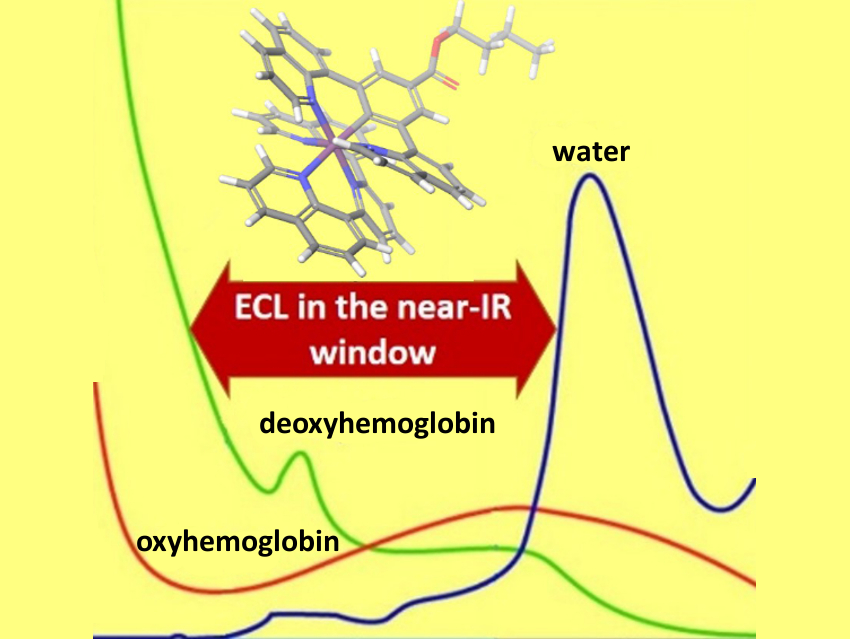Complexes that emit light upon electrochemical stimuli, a process known as electrochemiluminescence (ECL), could be useful for ultrasensitive bioanalytical applications. However, there is a lack of variety of available electrochemiluminophores. Most of the available ECL probes emit over a limited wavelength range centered around 600 nm. So far, there had been no efficient probes that emit in the near-infrared (NIR) range (700–900 nm). NIR light is useful for the study of biological systems because it can be transmitted comparatively far through living tissue—a phenomenon known as the “NIR window”.
Kellie L. Tuck, Monash University, Conor F. Hogan, La Trobe University, both Melbourne, Australia, and colleagues have synthesized two 2,6-di(quinoline-8-yl)pyridine (dqp)-based ruthenium(II) complexes (pictured below) with strong NIR emissions centered at about 710 nm. One of the complexes has an n‐butyl ester substituent, the other has the corresponding free carboxylic acid. The complexes were prepared from [Ru(dqp)(MeCN)3][PF6]2 via reactions with tert-butyl-2,6‐di(quinolin‐8‐yl)pyridine‐4‐carboxylate under microwave irradiation. The n-butyl ester was obtained when the reaction was performed in n-butanol, while using 1,4-dioxane as the solvent gave the free acid.

Both of these complexes display broad emission extending into the near-infrared (NIR) and are ECL-active in organic media. The photoluminescence quantum yields were 6.1 % and 1.8 % for the ester- and the acid derivative, respectively. Importantly, the ester-substituted complex shows intense ECL in aqueous media. This makes it a strong candidate for real-world bioanalytical applications.
- Near‐Infrared Electrochemiluminescence from Bistridentate Ruthenium(II) Di(quinoline‐8‐yl)pyridine Complexes in Aqueous Media,
Mayoorini Majuran, Georgina Armendariz‐Vidales, Serena Carrara, Mohammad A. Haghighatbin, Leone Spiccia, Peter J. Barnard, Glen B. Deacon, Conor F. Hogan, Kellie L. Tuck,
ChemPlusChem 2020.
https://doi.org/10.1002/cplu.201900637




